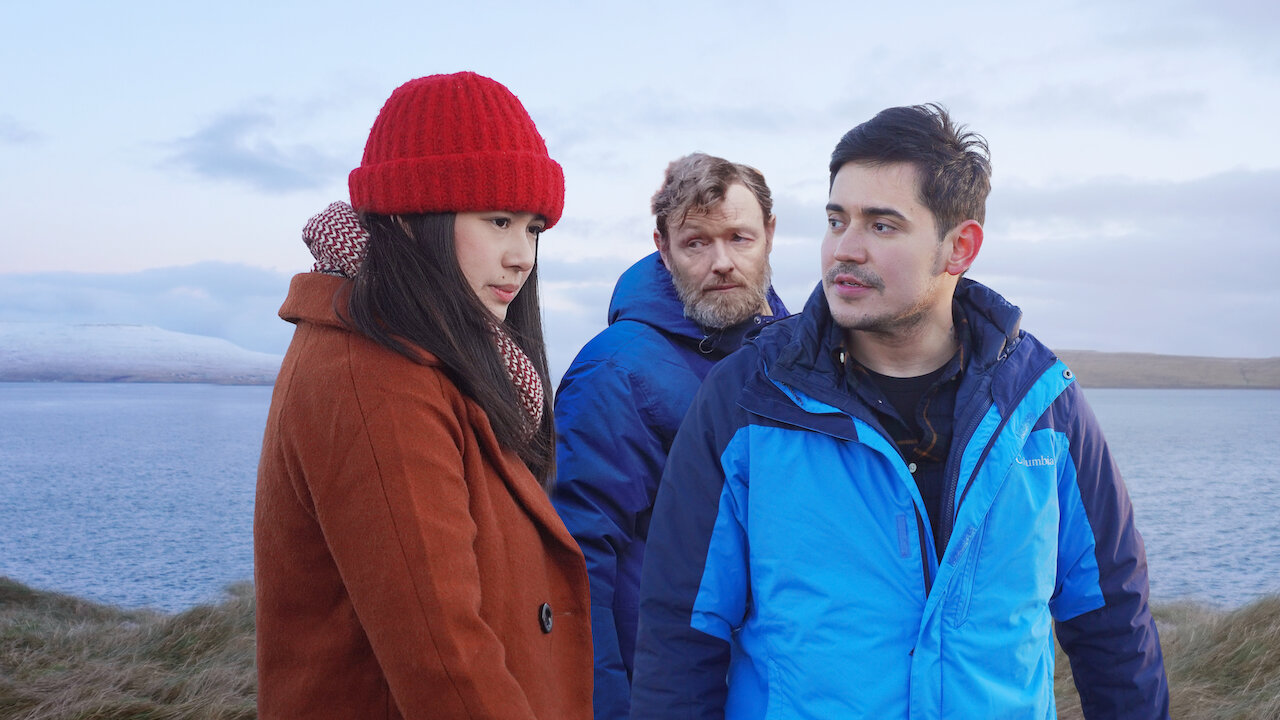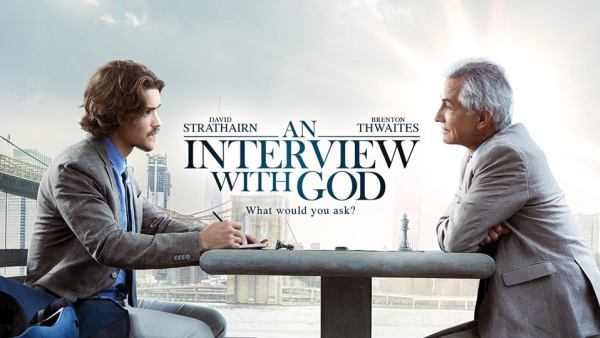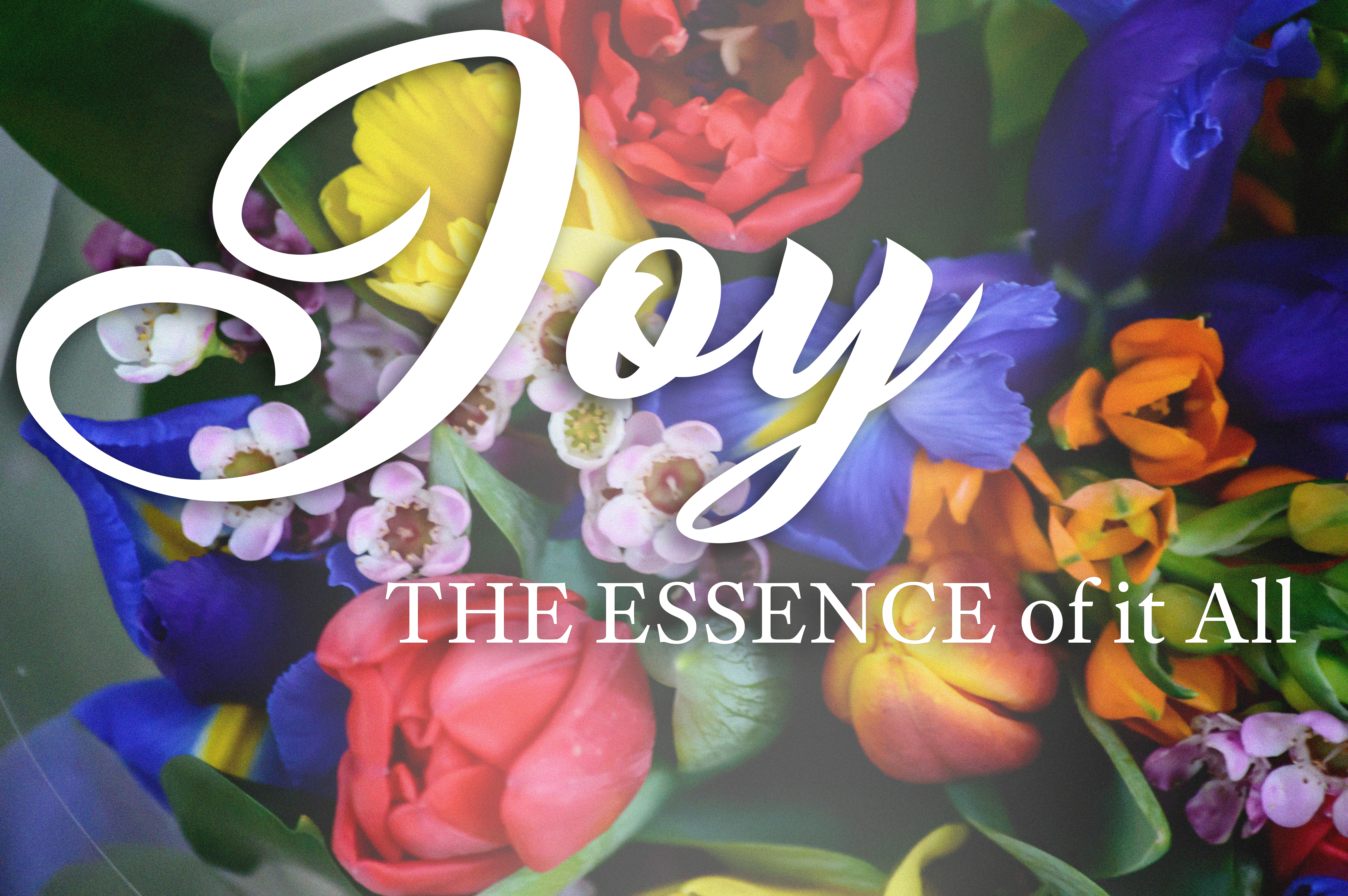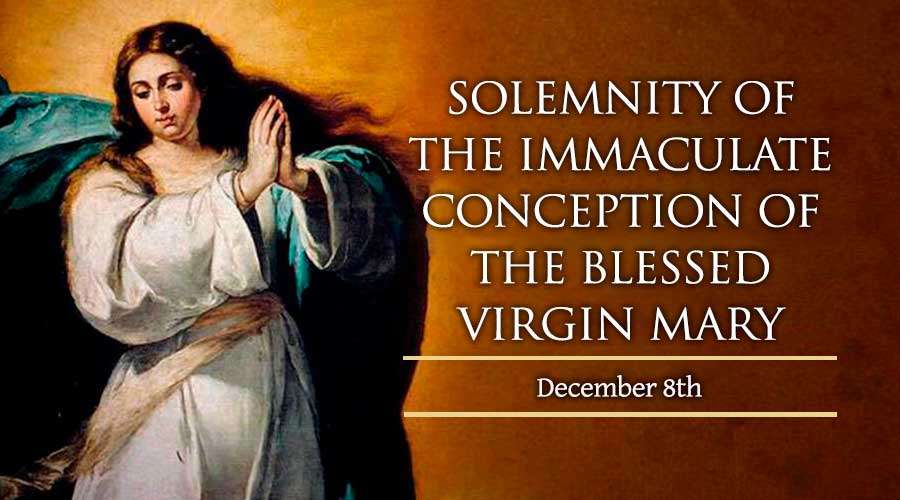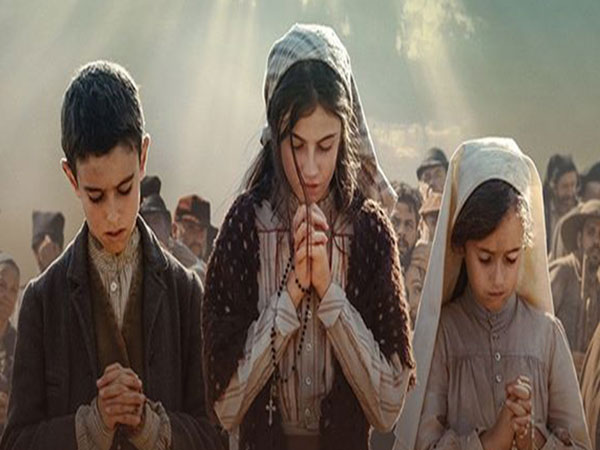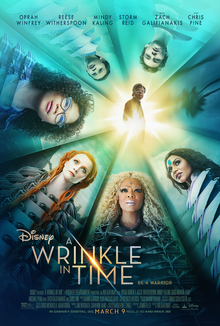
“YOU TRULY ARE WORTHY”
– An Exceedingly Compelling Message For The Youth
From
A WRINKLE IN TIME
FILM REVIEW
by Meanne M. Mijares
Cast
Storm Reid as Meg Murry
Oprah Winfrey as Mrs. Which
Reese Witherspoon as Mrs. Whatsit
Mindy Kaling as Mrs. Who
Levi Miller as Calvin O’Keefe
Deric McCabe as Charles Wallace Murry
Chris Pine as Dr. Alexander Murry
Michael Peña as Red
David Oyelowo as the IT, Red’s true diabolical form
Zach Galifianakis as The Happy Medium
Gugu Mbatha-Raw as Dr. Kate Murry
André Holland as Principal James Jenkins
Rowan Blanchard as Veronica Kiley
Bellamy Young as Camazotz Woman
Conrad Roberts as Elegant Man
Yvette Cason as a teacher
Will McCormack as a teacher
Daniel MacPherson as Calvin’s Father
Directed by Ava DuVernay
Produced by Jim Whitaker /Catherine Hand
Screenplay by Jennifer Lee/Jeff Stockwell
Based on A Wrinkle in Time by Madeleine L’Engle (young adult novel)
Production companies Walt Disney Pictures/Whitaker Entertainment
Distributed by Walt Disney Studios/Motion Pictures
THE STORY AND ITS THEME
Based on Madeleine L’Engle’s timeless classic of the same title, A Wrinkle in Time is a fantasy tale centered on the character of Meg Murry (Storm Reid) and her younger brother Charles Wallace (Deric McCabe). The two wander on an epic adventure to find their father (Chris Pine), a cloistered, antisocial scientist and are aided with the support of their friend Calvin O’Keefe (Levi Miller) on a search and rescue mission.
Meg, Charles Wallace and Calvin travel across dimension and space aided by three celestial beings, the “Mrs Ws” – Mrs Which (Oprah Winfrey), Mrs Who (Mindy Kaling), and Mrs Whatsit (Reese Witherspoon). The film’s theme is universal, depicting a transformative journey which tests the nature of darkness vs. light, revealing how love can outdo anything.
The film opens in a dark and stormy night. Meg Murry knows all about such nights. In a way, her life’s been an endless dark, stormy night for the last four years, ever since her father disappeared. He never even said goodbye. Maybe he couldn’t. The NASA scientist was working on something big—exploring the concept of the tesseract, a so-called “wrinkle in time” where space folds in on itself, allowing rapid transit between stars, constellations, maybe whole galaxies.
Perhaps Mr. Murry found a way to make the tesseract work. Perhaps he was sent by the government on a daring mission. Perhaps. Or perhaps Mr. Murry simply … left. Gossips speculate that Mr. Murry tired of his wife and children and deserted them. For Meg, the reason doesn’t much matter. Her father’s gone, and she’s never been the same. She hits out at school, fights with her classmates. She feels stubborn and unpleasant and badly stupid. On the anniversary of her father’s disappearance, someone sticks a note on her locker: “Happy anniversary,” it says. “If only you’d disappear too!”
Back at home, Meg goes downstairs and finds her younger brother, Charles Wallace, heating up milk. Always good to be prepared, he says. Sure enough, Meg’s mother soon comes down, and there’s enough milk for her, too. Then there’s a knock on the door.
In trudges a rather alarming red-haired woman wearing a gown made from, it gives the impression, stolen sheets. She’s a peculiar one, she is, and a stranger to boot—a stranger to everyone, apparently, but young Charles Wallace. He calls her Mrs. Whatsit.
She visits for a spell, tossing off strange little sentences here and there, admitting that wild, stormy nights like this are her glory. But before she departs, she turns to Mrs. Murry and says, “By the way, there is such a thing as a tesseract.”
Then she’s gone, leaving the cavernous Mrs. Murry behind.
Meg doesn’t know it just yet, but she’s just taken her first step on a galaxy-spanning adventure involving herself, Charles Wallace, a popular boy from school named Calvin and three of the strangest women Meg’s ever seen. If all goes well, they might just rescue Meg and Charles Wallace’s father. Oh, and save the universe while they’re at it.
But it won’t be easy-peasy. Many dark and stormy nights are heading their way.
STRONG POINTS
A Wrinkle in Time is an inquisitive bird, a quiet family drama told on a gargantuan panorama.
We’re told that Mrs. Whatsit and her two associates, Mrs. Who and Mrs. Which, are creatures of the light—celestial beings who battle darkness wherever they find it. But they do so with help: They mention that some of the greatest “warriors” against the darkness have come from Earth (rattling off names such as Einstein, Marie Curie and Gandhi), and these women would like Meg to join the battle now, too.
Meg, desperately insecure, initially doubts her role in this cosmic battle. But the plural “Mrs.” (as they’re called) encourage her to believe in herself—her inner beauty, her intelligence, her uniqueness. The wise Mrs. Which reminds Meg how improbable it is that she’s even here at all—how many events throughout the ages had to come together to make Meg “just exactly the way you are.” They encourage her to marshal not just her strengths, but her faults. Even her pain can become a channel for growth and hope, so they say.
The tesseract, we eventually learn, is launched through love. Curiously, Mr. Murry makes this step forward as he observes his wife and adopted son, Charles Wallace, through a window—catalyzing the tesser that, seconds later, splits him away from his family. Elsewhere during the movie, Meg’s love for her family—first for her father, then for Charles Wallace—literally pulls her toward them, always at great risk to herself. And while I don’t want to give away too much, this film suggests love is indeed the greatest power in the universe.
We also behold some nice family moments and hear some encouraging messages about adoption. And the movie peppering loads of wise little maxims throughout. Take these, for instance:
“Love is always there, even if you don’t feel it,” Meg’s dad tells her.
“Of course, we can’t take any credit for our talents,” Mrs. Whatsit says. “It’s how we use them that counts.”
“It’s OK to fear the answers, Meg,” the Happy Medium says. “But you can’t avoid ’em.”
The film, directed by Ava DuVernay bring out various talent in front of and behind the camera. Storm Reid carries the film as the story’s lead protagonist and gives a captivating feat. Her emotionally enduring portrayal of this character reverberates through the screen. She brings extra intensity to her character which reflects her personality onscreen and off. She has also been vocal about her hopes that the movie will inspire young people, especially those who look like her.
The movie tells everyone that they should be warriors and that they have it in them to be the light and be the warrior that they were truly born to be. It is truly important because young people often doubt themselves and these dark times are weighing heavily on us, so to be able to embody that and show the world and young people that they are enough and that they are worthy is truly remarkable.
I also relate very well to Meg’s character in a lot of ways. We can all see ourselves in Meg, actually. She is just a young teenage girl who’s just trying to grow up, who’s trying to fit in but has challenges and faults on top of what she’s going through already. It just takes her a trip around the universe to find out who she is and how much she’s worth and that she is worthy of being loved. I feel that millennials now are doing just that, trying to figure out who they are, who to surround themselves by and just trying to figure out who they want to be…We are trying to figure it out ourselves.
The character of Meg allows young girls, particularly young girls of color to see themselves revealed in a significant way. When they go to theaters and watch this movie, they will see a mirror image of themselves on the screen. The film’s objective is to be able to inspire a young generation of people and inspire young girls to know that they are perfect just the way they are. Even though they may have faults or challenges and may make mistakes, they are strong and influential.
Diversity and representation is very important, especially in times like this where most people of color or minorities aren’t getting signified and they are not being seen or heard. So to be able to be given those opportunities and embody people is really amazing. I feel like representation says a lot for everybody to be able to see themselves which I feel like they can do while watching A Wrinkle in Time is just really important and substantial.
A Wrinkle in Time has an incredible and impactful message for the youth. It not only features a strong family formation, but also inspires you to love the qualities that make you exceptional. DuVernay delivers a story that will speak to young people in all kinds of spectrum.
The film hopes that people, or young girls, or just anybody who sees it will leave inspired and just leave knowing that they are enough and that they are worthy of being loved and recognizing that they are the beautiful persons that they are meant to be and God wants them to be. It hopes as well that they realize they are the light and they can use that light to conquer darkness and bring the world together because our country and the rest of the world are living in bleak times now.
SPIRITUAL CONTENT
Those who’ve read Madeleine L’Engle’s novel A Wrinkle in Time may remember that, while not an explicitly Christian story (and Jesus, some argue, is put on a par with other secular and religious leaders), it contains a considerable level of Christian thought. L’Engle regularly quotes the Bible throughout that book.
Alas, most of those explicit references have been torn away here, replaced (at least superficially) with a certain unmoored spiritual tang.
Mrs. Who (who speaks mainly through other people’s words) quotes Lebanese poet Khalil Gibran, who was raised as a Christian but who also was influenced by Sufi Islamic mysticism. She quotes Buddha and the Islamic poet Rumi, too: “The wound is the place where the light enters you.” Mrs. Who emphasizes that God made us unique for a reason, and she says that pain can be an instrument for growth that can help marshal our apparent weaknesses for good.
To locate Meg and Charles Wallace’s father, the Happy Medium leads the children and the three Mrs. in a mystical, yoga-like ceremony. These elements, along with oft-repeated exhortations to “believe in yourself” and to embrace “oneness with the universe” could leave viewers with a New Age-y aftertaste.
The filmmakers wanted the book’s spiritual themes to be mirrored extensively in the movie for people of all faiths to be able to see themselves in it.
We also see extrasensory forces are at work, and one character can seemingly read minds well enough to see everyone’s deepest fears. Mrs. Who’s glasses have a bit of mystical power in them, as well.
SEXUAL CONTENT
Calvin and Meg are attracted to one another, but the closest we get to them being a “thing” (apart from a few lingering looks) is a hug here, some hand-holding there and a few praises regarding Meg’s hair. Mr. and Mrs. Murry kiss, with each expressing love for the another. Nothing more.
We hear indefinite conjecture that Mr. Murry “disappeared” with another woman. A beach scene includes some women in bikinis and shirtless guys. Surprisingly, Mrs. Whatsit and the Happy Medium are an item, though Whatsit says that, after a billion years, they avoid labels. (They flatter each other on their outfits, and Whatsit calls the Happy Medium “cute.”)
VIOLENT CONTENT
Meg suffers the burden of the movie’s sometimes dangerous pounding. She’s lifted, pulled and thrown about by strange vines or tendrils. She and Calvin initially flee what seems to be an emotional storm, but then climb into a hollow tree trunk so that the storm (which transforms into a massive tornado) can hurl them over a gigantic wall. Meg has trouble tessering, too, often coming out of this curious state of travel in serious pain and unable to move. (Mrs. Whatsit kicks her once afterwards, to confirm that she’s still alive.) She and others get pulled down a dark hallway by some unseen force.
Meg smacks someone in the face with a basketball. (Her mother later instructs her to write an apology letter.) Calvin falls from an incredible height, saved from certain death by sentient wildflowers. A character seems to sport glowing cracks in his face for a time, for some reason. The entity IT is referenced once as “the Happy Sadist.”
I am happy to report that there are no crude or profane language that was used and no drug and alcohol content as well.
OTHER NEGATIVE ELEMENTS
A dark evil breaks into Earth, causing many problems: One girl suffers from an eating disorder (her “eating rules” are posted on a bedroom wall). Calvin’s father scolds him for a poor report card, calling him an “idiot.” Gangsters make fun of an apparently homeless guy and rifle through his stuff. Children sometimes talk back to authority figures (though the movie does not encourage that behavior), and Meg walks out on her principal.
CONCLUSION
It’s not easy to make a movie of such a beloved—and such a weird—children’s book. Madeleine L’Engle’s 1962 classic has fought efforts at cinematic translation for decades, and perhaps it was irresponsible for anyone to do so. But let us give this Disney movie’s makers credit.
I must say, A Wrinkle in Time is indeed an incredibly daring movie. As Disney has been doing since Snow White, the studio bought the story and used it as the basis for the story it wanted to tell, leaving some of the book’s characters, scenes, theme and even feel on the cutting room floor.
The end result is a bit of a messy tesseract itself. Here’s why:
- The narrative here, while visually stunning, increases from one scene to the next with barely a reason and nary a structure, dropping us off on strange planets feeling breathless and unmoored. Sometimes things just don’t make much sense.
- The decision to strip the book’s Christian elements is quite puzzling to me, given the weight those elements have in the novel. It’s obvious that for L’Engle, those Christian reverberations were part of the point. To remove the movie of clear Christian references deprives the story of some of its potential, the very themes that made the novel so significant to begin with.
- At one juncture in the L’Engle’s story, for example, Dr. Murry gives Meg this encouragement, quoting Romans 8:28: “We were sent here for something,” he says. “And we know that all things work together for good to them that love God, to them who are called according to his purpose.”
- Contrast that with what I think is the film’s final line: “I believe in me.” It’s alright to believe in yourself and stuff like that. But in comparison to the book’s clear Christian themes, the movie’s message feels overly light and perhaps a bit disheartening.
Meg is a wonderful, charismatic young heroine who pushes through her anxieties and insecurities not only to save her father, but to save the universe, too. This quest pits her and the forces of light—of truth and freedom and above all, love—against a dark entity that, like Satan, screws and grimaces those values into something almost unrecognizable, something that uses our heroes’ own doubts and fears against them. The film shows us a family that’s both caring and broken, and it allows us to see how much they love and care for each other even when they’re sometimes at their most unlovable. Maybe most importantly, A Wrinkle in Time still points, notwithstanding in more subtle ways than the book, to timeless Christian truths: We are loved. We were made for a reason. As insignificant as we sometimes feel, we have purpose.
Although A Wrinkle in Time is not really a masterpiece to speak of, it still has a small number of creases and crumples of its own that families can unpack and iron out. And that’s one crinkle I can get used to.
And the movie is, at least in terms of its core messages, really, really, really good. I rate the film a perfect score of 5 stars.




